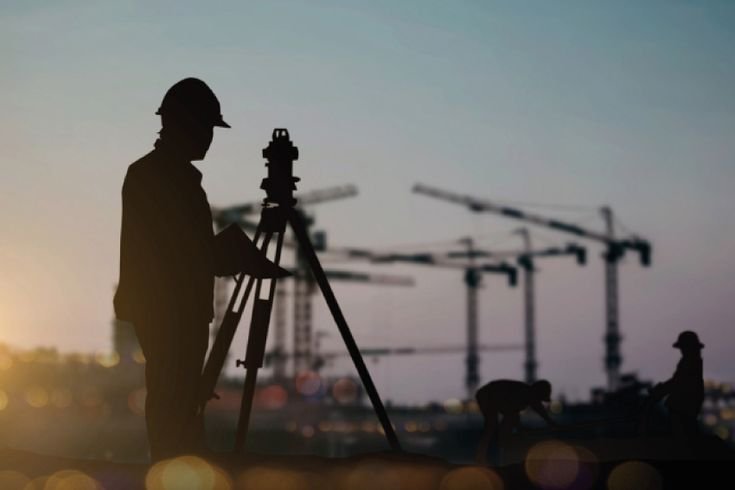Engineering Surveying – Level 3
About this course
Engineering Surveying – Level 3
Course Overview
This advanced course is designed for surveying professionals and civil engineers who want to deepen their knowledge of engineering surveying techniques, technologies, and applications. The course covers advanced topics such as geodetic surveying, deformation monitoring, BIM integration, and modern instrumentation.
Course Contents
Module 1: Review of Fundamental Surveying Principles
Recap of basic surveying concepts (Levels, Theodolites, Total Stations)
Coordinate systems and transformations
Error theory and adjustment computations
Module 2: Advanced Geodetic Surveying
Ellipsoids, geoids, and datums
Coordinate Reference Systems (CRS) and transformations
GNSS (GPS, GLONASS, Galileo) in engineering surveys
Real-Time Kinematic (RTK) and Network RTK (NRTK) surveying
Module 3: Engineering Surveying Applications
Setting out of engineering structures (roads, bridges, tunnels)
As-built surveys and verification
Volumetric calculations for earthworks
Module 4: Deformation Monitoring & Structural Health Monitoring
Principles of deformation analysis
Monitoring techniques (automated total stations, inclinometers, LiDAR)
Data processing and interpretation
Module 5: Modern Surveying Technologies
Terrestrial Laser Scanning (TLS) for engineering applications
UAV (Drone) Photogrammetry & LiDAR surveys
Integration with Building Information Modeling (BIM)
Module 6: Underground & Tunnel Surveying
Gyrotheodolites and underground alignment
Monitoring tunnel boring machines (TBM)
Subsidence and settlement analysis
Module 7: Legal & Professional Aspects
Surveying standards and regulations
Quality assurance in engineering surveys
Ethical considerations and professional responsibilities
Module 8: Practical Applications & Case Studies
Real-world engineering surveying projects
Software applications (AutoCAD Civil 3D, Leica GeoOffice, Trimble Business Center)
Hands-on exercises with modern equipment
Assessment & Certification
Practical assignments & fieldwork
Final project (case study report)
Written examination
Certification upon successful completion
This course is ideal for surveyors, civil engineers, and construction professionals looking to enhance their expertise in high-precision engineering surveying.
Comments (0)
In engineering surveys, two fundamental principles guide accurate and precise measurements: working from whole to part, and locating a new point by at least two measurements from fixed reference points. The "whole to part" approach involves establishing a robust network of control points, and then using those points to survey smaller areas, minimizing error accumulation. Locating a new point using multiple measurements ensures accuracy and redundancy.
Advanced Geodetic Surveying involves highly precise measurements over large areas, using techniques like GPS and laser scanning to determine the position and elevation of points on Earth's surface with a high degree of accuracy. It considers the true shape of the Earth (geoid) and uses reference systems like WGS84.
Engineering surveying plays a crucial role in various aspects of engineering, including civil, mechanical, and structural engineering. It involves measuring the earth's surface, determining the relative position of objects, and preparing maps for various purposes.
Deformation and Structural Health Monitoring (SHM) in engineering surveys involve measuring and tracking changes in a structure's shape, dimensions, and overall health over time. This is crucial for ensuring structural integrity, safety, and for planning maintenance. Deformation monitoring focuses on changes in shape and dimensions, while SHM encompasses a broader range of parameters like stress, strain, and vibrations.
Modern surveying in engineering leverages advanced technologies for precise and efficient data collection, including total stations, GPS, drones, and 3D laser scanning. These tools offer increased accuracy, time savings, and cost-effectiveness compared to traditional methods.
Underground surveying, specifically tunnel surveying, involves measuring and mapping subterranean areas like tunnels for construction and other purposes. It's a specialized form of surveying that differs from surface surveying due to unique challenges like limited space, poor lighting, and the need for accurate alignment and leveling.
Engineering surveying encompasses the application of surveying principles to civil engineering projects, involving both legal and professional considerations. It involves precise measurements and data gathering to support design, construction, and land management, often requiring specialized knowledge and adherence to ethical standards.
Case studies provide real-world examples to demonstrate how theoretical concepts and problem-solving strategies are applied in practice. They offer in-depth analysis of specific situations, allowing for a deeper understanding of complex issues and potential solutions. This method is particularly useful in fields like business, management, and engineering, where practical application and learning from real-world scenarios are crucial.





